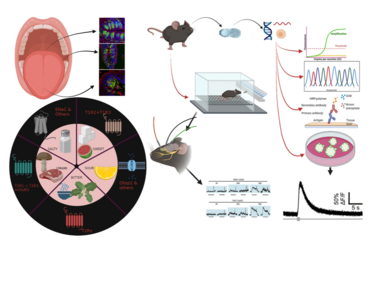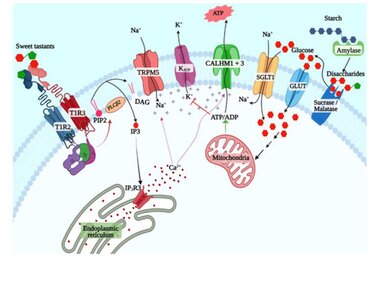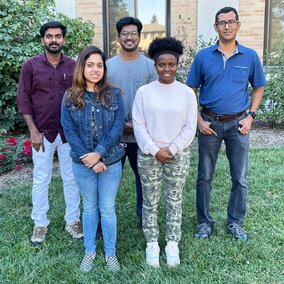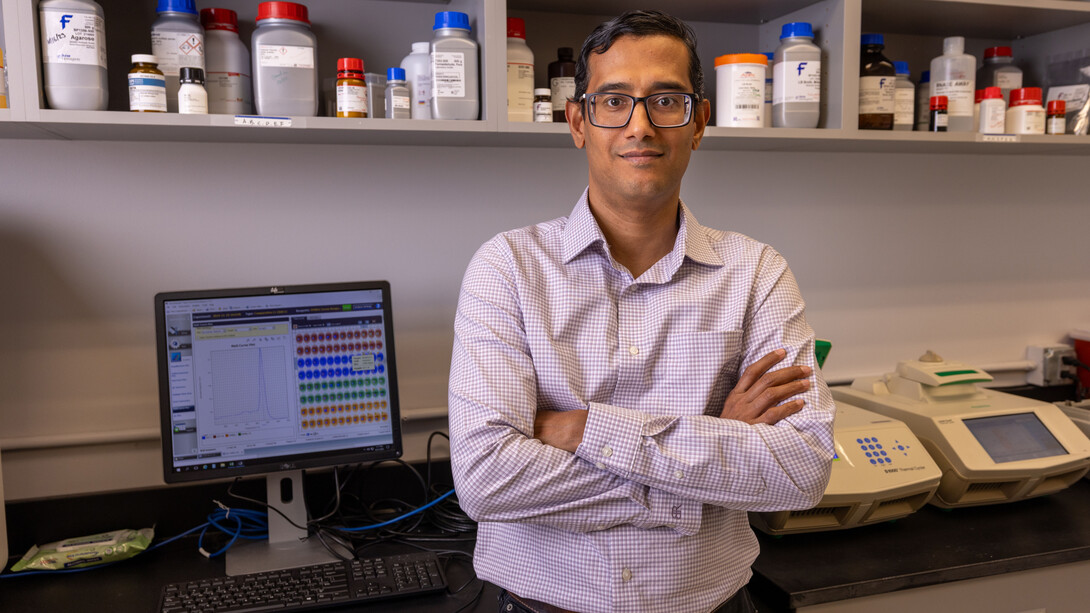
The taste system is the first to physically encounter ingested food and is in many ways a gatekeeper of nutrition. Unhealthy eating habits, such as the overconsumption of sugars, fats, and salt are the major causes of lifestyle diseases such as obesity, diabetes, and hypertension.
Taste buds, located primarily on the surface of the tongue but also on other locations in the oral cavity such as the soft palate, contain several types of taste receptor cells that sense and transduce taste signals. The receptors and downstream signaling components for sweet, bitter, low salt, sour, and umami taste qualities are known, while those for high salt remain unidentified. Taste nerves carry taste signals from taste cells to the gustatory cortex through a relatively well defined (at least in rodents) neural pathway, that gives rise to taste guided behaviors.
A poorly studied aspect of taste biology is how the oral microbiome and the mucosal immune responses they trigger affect taste signaling.
Current projects in the lab aim to identify pathways regulating taste signaling and taste-microbiome interactions, using multiple approaches such as single cell and spatial RNASeq, molecular genetics, histology, behavioral studies, and calcium imaging in conditional knockout mice and cultured taste organoids.

Lab Members
Former Lab Members

Oliva Ghosh

Pascaline Nyonshuti

Jayaram Sakthi Prasad

Publications
Selected Publications
2023
Y Qin, SR Palayyan, X Zheng, S. Tian, RF Margolskee, SK Sukumaran
Type II Taste Cells Participate in Mucosal Immune SurveillancePLoS biology 21 (1), e3001647
doi.org/10.1371/journal.pbio.3001647
2022
Sunil Sukumaran and Salin Raj Palayyan
Sweet Taste Signaling: The Core Pathways and Regulatory Mechanisms
July 2022. Int J. Mol. Sci. 2022, 23(15), 8225
doi.org/10.3390/ijms23158225
2021
Yumei Qin, Sunil K. Sukumaran, Robert F. Margolskee
Nkx2-2 expressing taste cells in endoderm-derived taste papillae are committed to the type III lineage
June 2021. Developmental Biology, Volume 477
September 2021, Pages 232-240
doi: 10.1016/j.ydbio.2021.05.020
2018
Yumei Qin, Sunil K. Sukumaran, Masafumi Jyotaki, Kevin Redding, Peihua Jiang, Robert F. Margolskee
Gli3 is a negative regulator of Tas1r3-expressing taste cells
February 2018. PLoS Genetics (14(2):e1007058
doi:10.1371/journal.pgen.1007058
2017
Sunil K. Sukumaran, Brian C. Lewandowski, Alexander A. Bachmanov, Robert F. Margolskee
Whole transcriptome analysis of taste bud cells Sci Rep.
2017 Aug 8;7(1):7595
doi:10.1038/s41598-017-07746-z
2016
Sunil K. Sukumaran, Karen K. Yee, Shusuke Iwata, Ramana Kotha, Roberto Quezada-Calvillo, Buford L. Nichols, Sankar Mohan, B. Mario Pinto, Noriatsu Shigemura, Yuzo Ninomiya and Robert F. Margolskee
Taste cell-expressed α-glucosidase enzymes contribute to gustatory responses to disaccharidesProc Natl Acad Sci U S A.
2016 May 24;113(21):6035-40
doi:10.1073/pnas.1520843113
Brian C. Lewandowski, Sunil K. Sukumaran, Robert F. Margolskee and Alexander A. Bachmanov
Amiloride-Insensitive Salt Taste Is Mediated by Two Populations of Type III Taste Cells with Distinct Transduction MechanismsJ Neurosci.
2016 Feb 10;36(6):1942-53
doi:10.1523/JNEUROSCI.2947-15.2016
2011
Karen K. Yee, Sunil K. Sukumaran, Ramana Kotha, Timothy A. Gilbertson and Robert F. Margolskee
Glucose transporters and ATP-gated K+ (KATP) metabolic sensors are present in type 1 taste receptor 3 (T1r3)-expressing taste cellsProc Natl Acad Sci U S A.
2011 Mar 29;108(13):5431-6
doi:10.1073/pnas.1100495108



